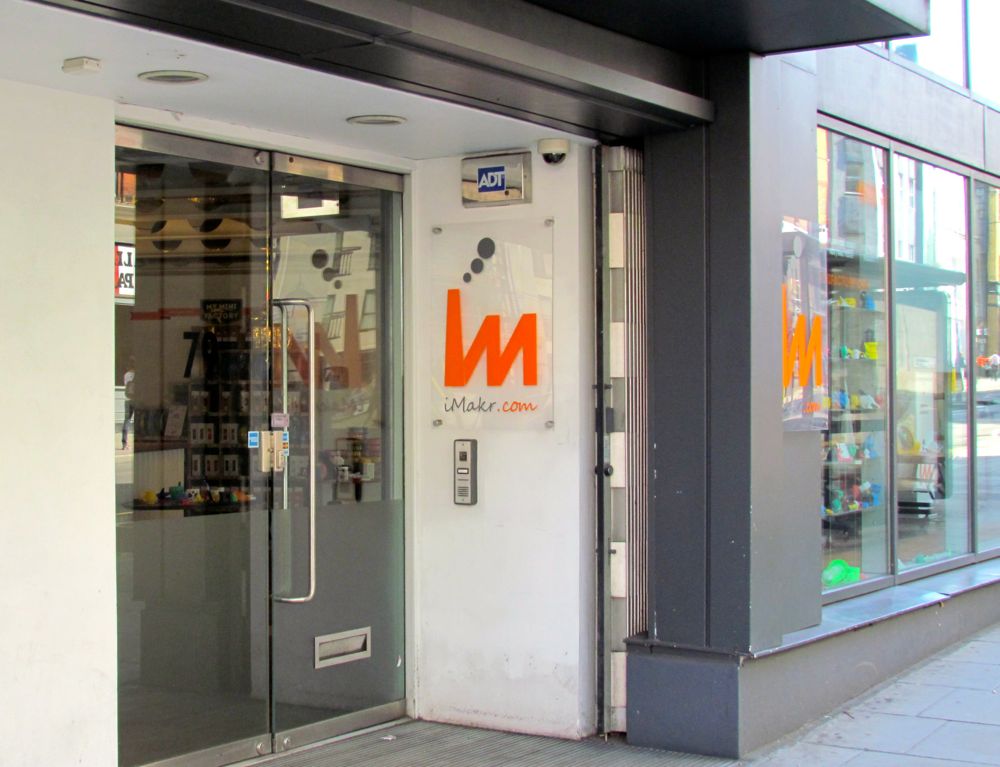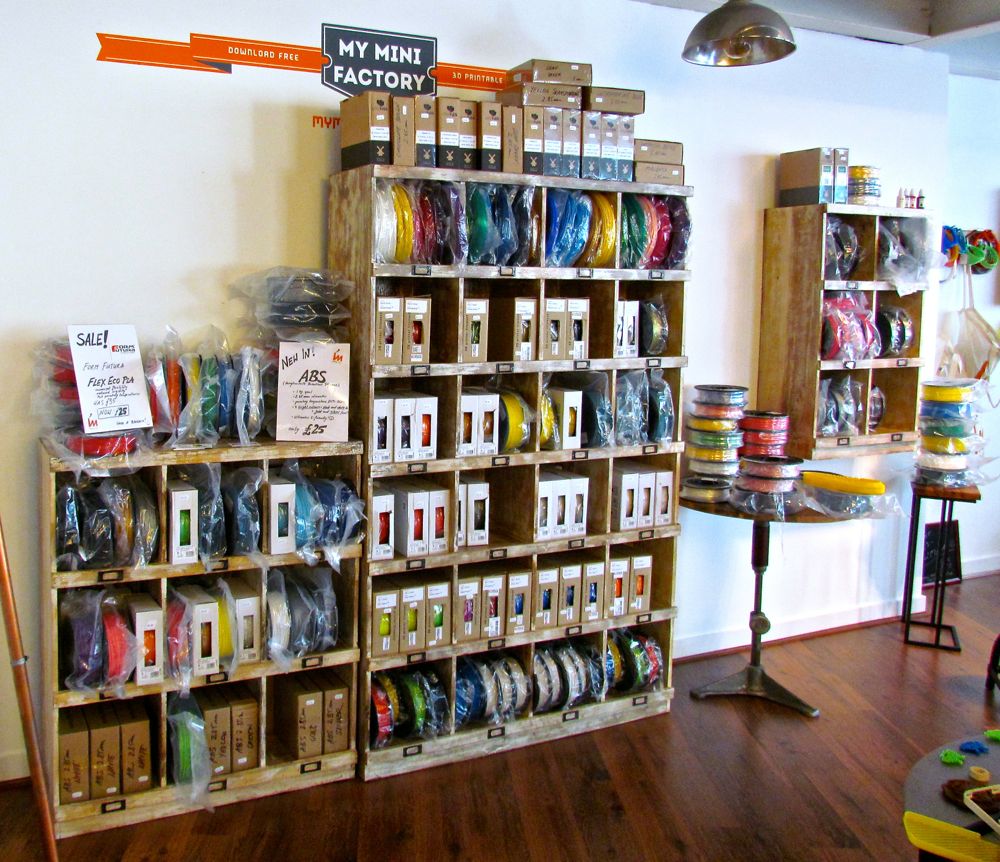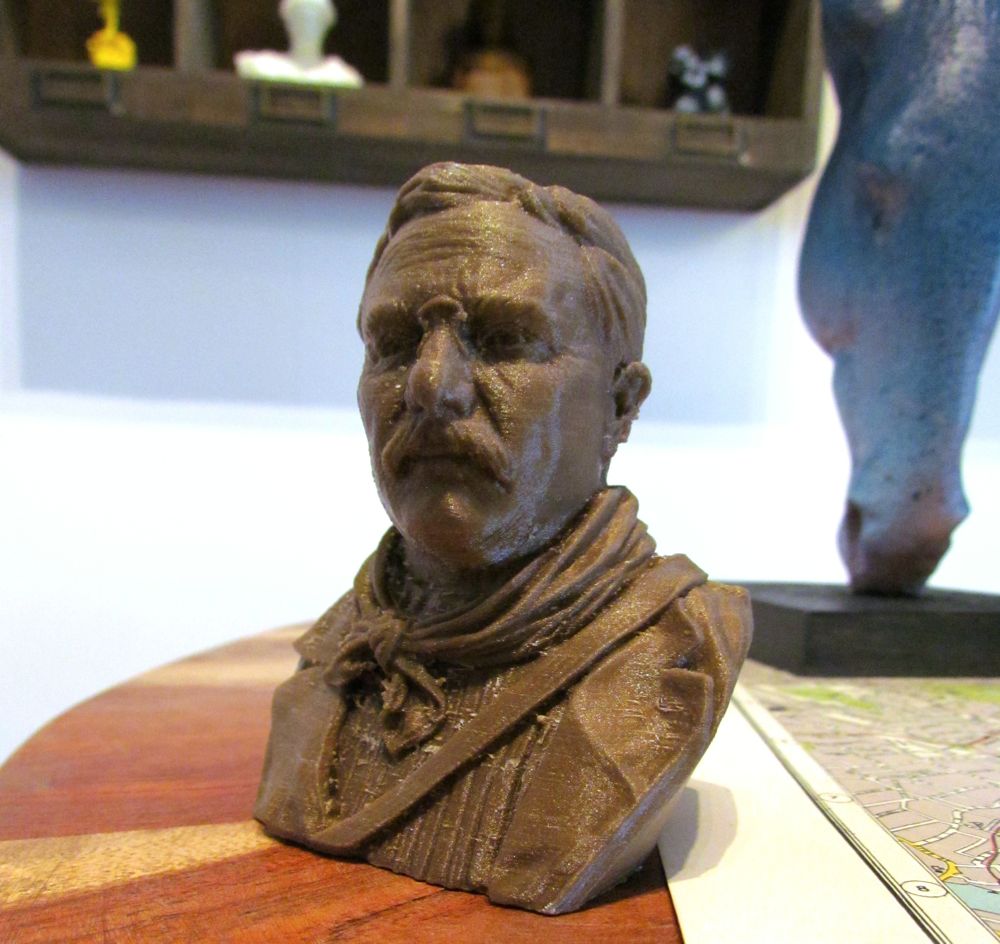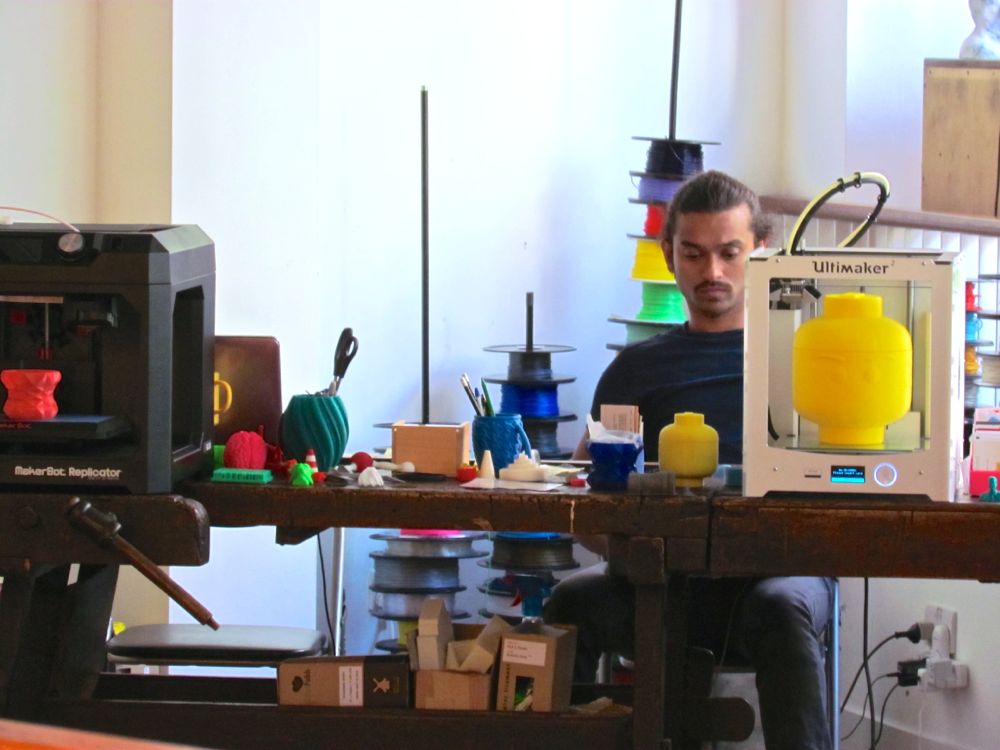
While in London recently we were able to visit the iMakr store, one of the few dedicated resellers of personal 3D printer gear.
The company is one of very few that attempts to sell 3D printing equipment directly to the public using a storefront strategy. According to iMakr’s Marketing Coordinator, Rees Calder, iMakr currently has two locations, one in London and the other in New York City. However, for all the visibility of their storefronts, we suspect most of their sales occur online from their website. The storefronts really perform awareness, education, equipment servicing and connectivity with the public.
At the store you’ll be able to check out machines deemed “good” by the company; they are constantly asked by vendors to market gear, but accept only a few after significant testing. Machines that break or don’t work properly are eventually weeded out of iMakr’s product shelf.

The company not only allows prospective clients to see and touch the machinery, they also offer free training in 3D printing and basic 3D design. Calder tells us their twice a week sessions attract 15-20 people each night. Many of these folks do not own a 3D printer and simply wish to learn more about the technology. Some return and purchase equipment.
A key strategy for iMakr is their online ecosystem, MyMiniFactory, which provides a collection of 3D models suitable for 3D printing by the equipment they market. Unlike most 3D model repositories, iMakr ensures each and every 3D model is printable by actually attempting to print them. Models that fail their certification print are referred back to their submitter with some suggestions on how to make it more printable. iMakr has several staff dedicated to this service as well as an array of twelve 3D printers that are likely very busy.

iMakr sells prints and performs 3D printing services. In the lower level of the store they have constructed a powerful 3D scanning booth equipped with no less than 52 Canon 1100D DSLR cameras. The brightly lit, fully enclosed scanning booth can capture 52 images from all directions simultaneously. This enables the ability to capture 3D scans of uncooperative subjects, such as pets or crawly kids. Once captured, iMakr can print them in full color. Apparently this is a substantial business, as iMakr employs several staff dedicated to print finishing.

Recently they’ve launched a method to increase the number of 3D models in MyMiniFactory by asking their community to submit images of notable museum statues and sculptures. They’re not asking the community to perform 3D scans; instead just submit images. iMakr can then send the submitted images to the same software setup they use for their 3D Scanning Booth to convert the images into a real 3D model. So far they’ve gathered a “couple of hundred” good scans in this way.
We’re told they’re talking to Google about incorporating these captured 3D scans into Google Streetview so that someone could download the 3D model of a work of art from their browser. It’s not clear that this would ever really happen, but we hope it does.

We like iMakr’s method of offering the public them the ability to learn more about 3D printing in a comfortable manner. There are still a great many consumers who don’t understand the technology. And for iMakr, it succeeds.
Via iMakr

